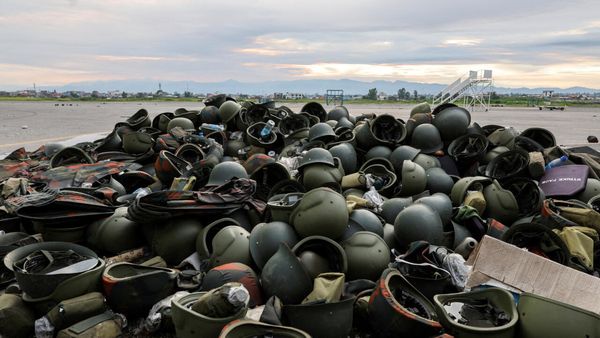Fresh Australian fish could be off the menu in more households if prices continue to rise and supplies keep falling, according to the peak body representing the West Australian seafood industry.
WA Fishing Industry Council chief executive Darryl Hockey said demand for some iconic WA fish such as pink snapper and dhufish was outstripping supply.
"Anybody who is a regular consumer of fish can see over the past six months or so in particular prices have gone up quite significantly," he said.
"That's not because [fishers] are charging any more for the fish, it's because there is increasing demand from the restaurants and fish and chip shops and fresh fish shops to try and get the quantities that they need.
Australia currently imports 70 per cent of the seafood consumed nationally, however Mr Hockey said the industry had noticed a change in consumer behaviour towards wanting to buy more locally caught seafood.
"Since COVID came along and people are wandering out yonder, it's a become a bit of a culinary experience that you go to a particular area and you want to see some of the local products, whether it's wine, agricultural products or fish," he said.
"That loyalty to WA products has grown, and that's a very healthy thing.
"But our concern is that our industry might not be able to provide the same food at the same price as we've done in the past, and that means that the consumers of Western Australia miss out.
Fresh fish shop shuts
Despite the increased demand and domestic travellers, at the end of this month, the only fresh fish shop along a 300-kilometre section of the coast between Perth and Dongara will close its doors.
Laura Hooton said she made the decision to close due to rising fish prices and difficulty finding a reliable supply of fish to sell.
"The demand for fish to supply the marketplace in Perth is pushing the cost up and up," she said.
"We are having to compete with a lot higher prices; it's pushing the fish cost too high for the general public.
"Four months ago I could sell filleted pink snapper for $62 a kilo, now I'm up to the $70 a kilo bracket.
"It's pretty sad that you come to a coastal town and you can't access fresh fish."
Ms Hooton said with the flagged 50 per cent cut to the total allowable catch of fish in the West Coast Demersal Scalefish fishery, she could not see finfish supply improving.
However Ms Hooton said it was important sustainability measures to increase fish stocks were taken in the West Coast fishery, which stretches from Kalbarri to Augusta.
She and her partner had noticed a decline in fish stocks in the fishery several years ago and this eventually forced them to close the finfish side of their commercial fishing operation.
Ms Hooton said she had noticed Perth-based fresh seafood retailers changing their products.
"A lot of them have already moved away from line-caught fish because it is becoming too hard to access.
A lot of them are stocking the northern trap fishery fish, which is more affordable but it's nowhere as good as the quality of the line-caught fish along our local coast," she said.
State planning needed
Mr Hockey said he was concerned industrial projects planned for the WA coastline, and marine parks slated for the Kimberley and South West, could further reduce fish stocks available to the commercial sector.
"We've got these industrial projects going along, like industrial salt in the Pilbara, oil and gas seismic and decommissioning work, a swathe of offshore renewable wind farms going in along the coast and offshore," he said.
He said the fishing industry needed a "seat at the table" in early discussions to ensure projects were not being built on key habitats, and that the activities of the fishing industry would not be restricted.
"We've only got a limited supply of fish at the moment, but that amount is itself under pressure," he said.







